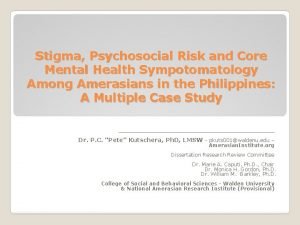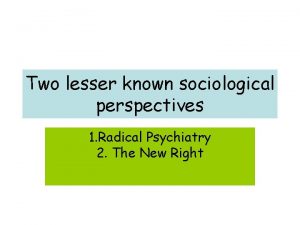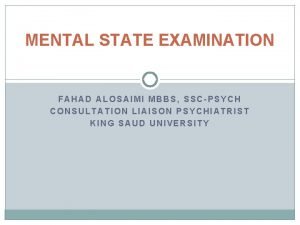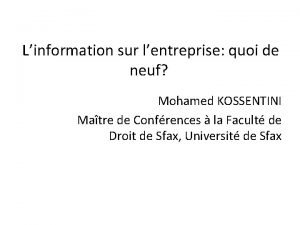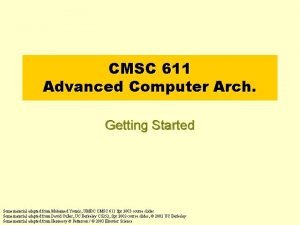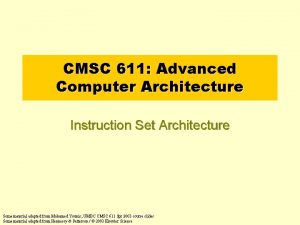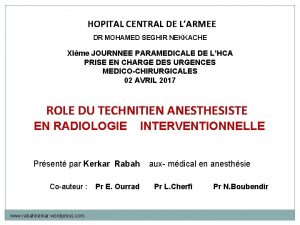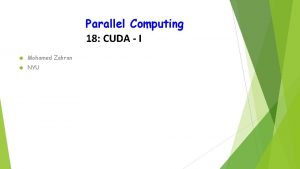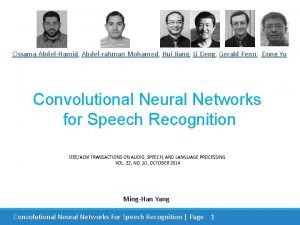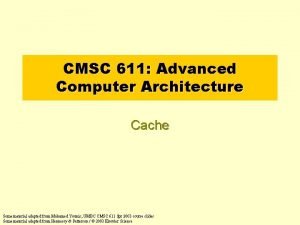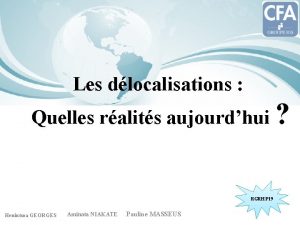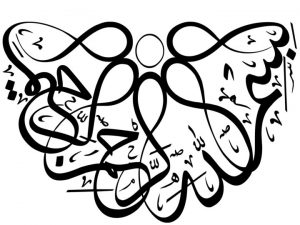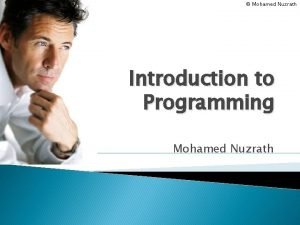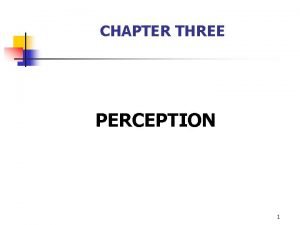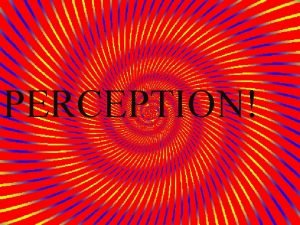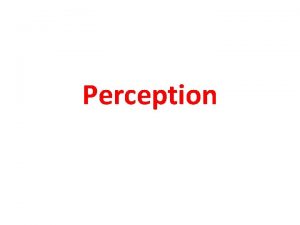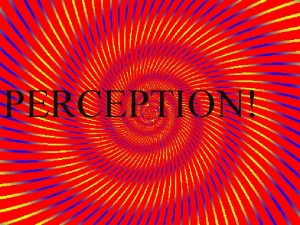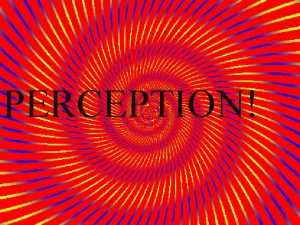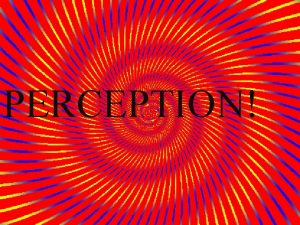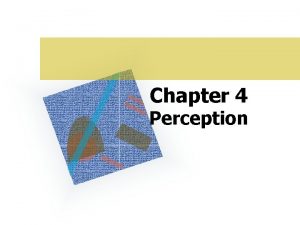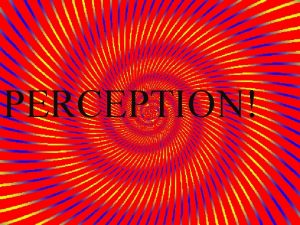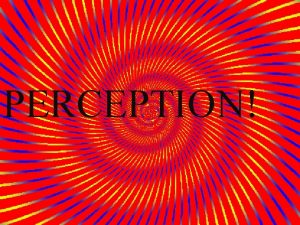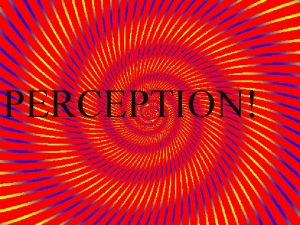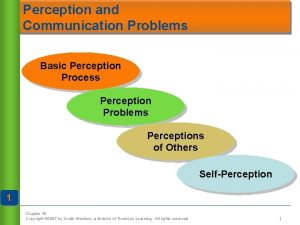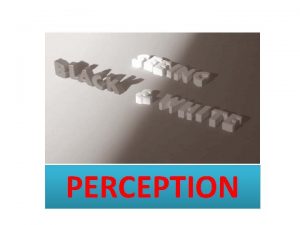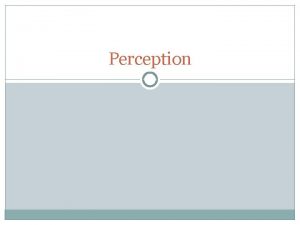Perception Dr Mohamed Mitwally Elsayed Psychiatry Department Mansoura













































- Slides: 45


Perception ﺍﻹﺩﺭﺍﻙ Dr. Mohamed Mitwally Elsayed Psychiatry Department Mansoura Faculty of Medicine

Cognition Behaviour Emotions

Perception ﺍﻹﺩﺭﺍﻙ

“Giving meaning to a stimulus “ (to a sensation) It is our gate to know the world around and to acquire knowledge The process of organizing and interpreting information, enabling us to recognize meaningful objects and events.

Nature of perceived stimuli 1 - Symbols: Unm h nl b rd y v 2 - Signals: 3 - concepts: kindness, success, “rewesh”……

**Neuro-physiology of Perception Stimulus visual pathways & Receptors Sensation (vision) Association areas of the brain Perception

Association areas “Psychic areas” Visual: Auditory: Sensory: 18 & 19 22 5&7

Perceptual Organization The process of grouping stimuli together (organization) so that one can more readily determine the meaning of these stimuli as a whole (perception). The brain creates a coherent perceptual experience by perceiving a stimulus as a whole than perceiving discrete entities. ‘the whole is better than sum total of its parts’.

Perceptual Organization I- Stimulus Factors A- Figure-Ground relationship B- Building-up a figure II- Personal Factors

A- Figure-Ground relationship According to this principle any figure can be perceived more meaningfully in a background and that figure cannot be separated from that background. For example, letters written with a white chalk piece are perceived clearly in the background of a blackboard.

I- Stimulus Factors Figure-Ground relationship

I- Stimulus Factors A- Figure-Ground relationship

I- Stimulus Factors A- Figure-Ground relationship

I- Stimulus Factors B- Building-up a Figure: 1 - Similarity 2 - Proximity 3 - Good Form Continuity b) Symmetry c) Closure d) Approximation a) III I 000 00

Similarity Stimuli need not be nearer to each other for perception. If there is similarity in these objects, they are grouped together and perceived, even if they are away.

Proximity means nearness. The objects which are nearer to each other can be perceived meaningfully by grouping them

l Good Form: a- Continuity b- Symmetry C- Closure { } { )

Continuity Any stimulus which extends in the same direction or shape will be perceived as a whole

Closure When a stimulus is presented with gaps, the human tendency is to perceive that figure as complete one by filling the gaps psychologically.

Symmetry Objects which are having symmetrical shape are perceived as groups.

II- Personal Factors When an individual looks at a target and attempts to interpret what he or she, that interpretation personal is heavily characteristics influenced of by individual perceiver. The major characteristics of the personal factors influencing perception are:

1 - Attitudes: The perceiver's attitudes affect perception. 2 - Mood: Moods can have a strong influence on the way we perceive someone. We think differently we remember information we form impression of others

3 - Motives: Unsatisfied needs or motives stimulate individuals and may exert a strong influence on their perceptions. ex. Insecurity 4 - Self-concept “Self confidence”: An individual with a positive self-concept tends to notice positive attributes in another person. A negative self-concept can lead a perceiver to pick out negative traits in another person. Greater understanding of self allows us to have more accurate perceptions of others.

5 - Interests: The focus of our attention appears to be influenced by our interests. Because our individual interests differ considerably, what one person notices in a situation can differ from what others perceive Coming late…. . Preoccupation ant attention

6 - Expectations: Expectations can distort your perceptions in that you will see what you expect to see.


Pitfalls of Perception “hidden dangers or difficulties” 1) Impression of other: l First impression overwhelm second, third l Negative impressions of others (when you are aware of both positive and negative qualities, you tend to be more influenced by negative)

2) Halo & devil effect l We select the first dominant characteristic of a person (wealth, appearance, clothing) l we then assign accompanying positive or negative traits to the person

l Halo (attractive people): smart, happy rich , honest l Devil (unattractive): dishonest, poor l Problem: unfairly punish or reward others due to one dominant trait

3) Selective perception is also out tendency to choose information that supports our view points; Individuals often ignore information that makes them feel uncomfortable or threatens their view points.

4) Self serving bias l Your test grades when well l when bad Other’s test grades when well when bad

Psychophysics of Perception 1 -Accuracy of perception: Perception depends on many factors and so, its accuracy is questionable, specially if the sign is ambiguous. 2 -Perception of number (span of apprehension) - It is the number of items which can be correctly estimated in a single glance without counting.

3 - Variable error of perception: -The error occurs on both sides of the correct value - Difficult to be eliminated or corrected. 4 - Constant error of perception: -The error occurs always on only one side of the correct value -Easily corrected

5 - Absolute threshold of perception: It is the minimal value of the stimulus intensity which can be perceived 1 1 1 6 - Difference threshold of perception: It is the minimal value of increase or decrease in a stimulus which an individual can observe. 1 1 1

7 - Perceptual constancy: This refers to stableness in perception. We have a tendency to perceive the objects as relatively stable and unchanging in shape and size, despite of a change in the image that we receive. When we see people and houses from the top of hill, the images will be very small. But we do not get confused by this. We perceive them correctly according to their actual size.

8 -Perceptual artifacts: It is the perception of a stimulus after being physically ceased. i. e. the “after-effect” of a stimulus. if you stare at a blue square, you will see a yellow afterimage

9 - Extra-sensory Perception: ? ? ? Information may be transmitted through channels other than the known sensory mechanisms

(a) Telepathy: thought transmission (b) Clairvoyance: knowledge of what’s happening elsewhere (c) Precognition: Prediction of future events (d) Psychokinesis: moving objects by mental power (e) Color detection: By touch

Faulty Perception 1 - Camouflage: ﺍﻟﺘﻤﻮﻳﻪ **making others unable (blind) to perceive a stimulus. **Examples: -Animals & Birds -In the Army **Mechanisms: addition, embedding, prolongation, avoiding figure/background contrast, ………. .

camouflage

2 - Illusions: **Definition: ”False perception of external stimulus” or “Misinterpretation of a real stimulus” **Causes: A- Physical causes: mirror, echo, . . B- Habit & Familiarity: proofreader’s illusion C- Set & Expectation: telephone ring / door bell

**Types: according to different sensation: auditory, visual, olfactory, ……

3 - Hallucinations: **Definition: ”Mental impression of sensory vividness in absence of a stimulus”. **Causes: Pathological **Types: according to different sensation: -auditory, visual, olfactory, tactile, gustatory -Hypnagogic & Hypnopompic: Normal Halluc.

4 -déjà vu: Recognition of a foreign subject as familiar & Jamais vu phenomena: Denial of a well-known subject 5 -Depersonalization Perceiving one’s self (or part of it) as different & Derealization Perceiving the external world (or part of it) as different
 Lodacain
Lodacain Monique mansoura
Monique mansoura Weida elsayed
Weida elsayed Addiction psychiatry expert witness
Addiction psychiatry expert witness Core psychiatry
Core psychiatry Forensic psychiatry vs forensic psychology
Forensic psychiatry vs forensic psychology Gipsofia
Gipsofia Psychiatry in ethiopia
Psychiatry in ethiopia Radical psychiatry sociology
Radical psychiatry sociology National network of child psychiatry access programs
National network of child psychiatry access programs National network of child psychiatry access programs
National network of child psychiatry access programs Mse psychiatry
Mse psychiatry Jamaica hospital psychiatry residency
Jamaica hospital psychiatry residency Mse psychiatry
Mse psychiatry Asclepiades father of psychiatry
Asclepiades father of psychiatry Step 1 score percentiles 2021
Step 1 score percentiles 2021 Meaning of criminal psychology
Meaning of criminal psychology Community geriatric psychiatry
Community geriatric psychiatry Geriatric psychiatry definition
Geriatric psychiatry definition What is the difference between neurosis and psychosis
What is the difference between neurosis and psychosis Cécile hanon
Cécile hanon Mohamed kossentini
Mohamed kossentini Dodi fayed
Dodi fayed Mohamed merchant
Mohamed merchant Mohamed younis umbc
Mohamed younis umbc Mohamed salah
Mohamed salah Mohamed younis umbc
Mohamed younis umbc Hopital mohamed seghir nekkache
Hopital mohamed seghir nekkache Professor nasser mohamed
Professor nasser mohamed Mohamed fayad sjsu
Mohamed fayad sjsu Az iszlám padisahja
Az iszlám padisahja Nyu parallel computing
Nyu parallel computing Abdelrahman mohamed
Abdelrahman mohamed Mohamed homayed
Mohamed homayed Mohamed samir design
Mohamed samir design Mr mohamed chafik el idrissi
Mr mohamed chafik el idrissi Mohamed akel
Mohamed akel Mohamed younis umbc
Mohamed younis umbc Dr. mohammad diab
Dr. mohammad diab Dr mohamed eldeib
Dr mohamed eldeib Riham mohamed aly
Riham mohamed aly Abukar mohamed
Abukar mohamed Mohamed samir design
Mohamed samir design Mohamed taamouti
Mohamed taamouti Mohamed akel
Mohamed akel Dr mohamed bashar shala
Dr mohamed bashar shala




